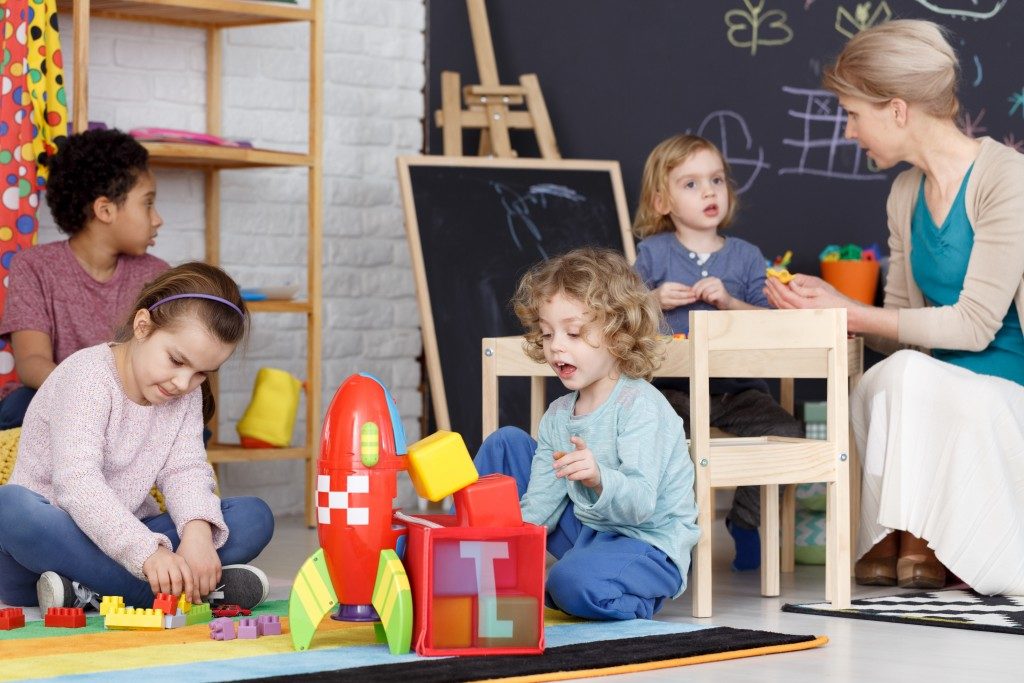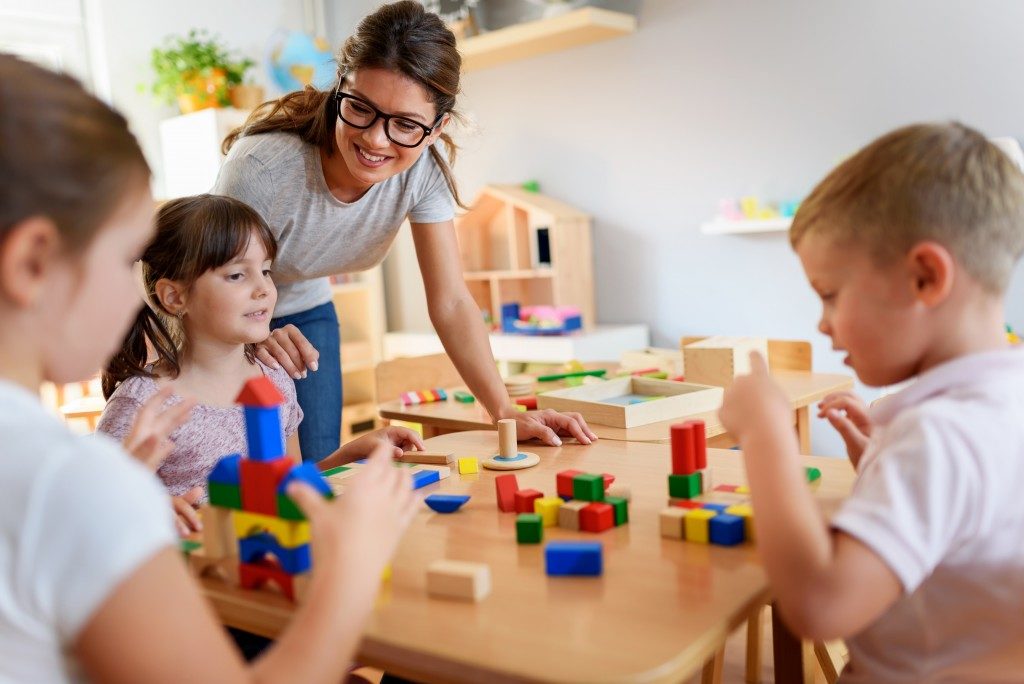The classroom set up influences your child’s learning. Multiple factors influence a toddler’s learning abilities, and one of those is the classroom set up. Teachers can manipulate how they decorate their classrooms (from painting alphabet murals to choosing school furniture chairs) to turn them into environments that are conducive to learning. This is especially important for kids in their preschool years, as they will be spending their formative educational years getting used to what being in a classroom feels like.
Social Comfort: The classroom should encourage the child to feel at ease even when he/she is away from the comfort of his/her parent’s presence.
Comfort isn’t just about how spacious the classroom is or what toys are available for your kids–We’ll talk about the classroom design later. Sending a toddler to school means preparing the kid to be away from the comfort of his or her parents’ presence. Therefore, one of the first things parents need to check is if the kids will feel comfortable in a classroom. If it’s possible, share with your child’s teachers your kid’s unique needs. Share with the teachers your kid’s personality, allergies, the activities that he/she likes, and how to best calm him/her down when he/she is upset. This way, the teachers will find it easier to make the classroom environment more comfortable for your kid.
Age-appropriate Design: The classroom should be adequately designed to make learning fun for kids, but not overly designed that the elements become too distracting.

Good classroom design is essential to help kids correlate learning with having fun. The essentials you need to check for classroom design should be how spacious the room is, how comfortable the learning space is (child-friendly school furniture such as chairs and tables included) how relevant the available gadgets and toys are for learning. Many parents opt to send their kids to preschools with colourful murals, rubber playmats, and a nice, spacious playground. However, studies note that parents sending their kids to school shouldn’t be too impressed with the heavily decorated classroom, as this may be a cause of distraction for their kids. The key is to simplify the fun. Case in point: If it’s a preschool, the walls should have a colourful number line from 1 to 10, and not a multiplication table.
Immersive Learning: The classroom should have tangible materials for music, arts, motor skills, and nature to encourage the child to go out of his/her comfort zone.
Preschool is not a time for theoretical learning; rather, it is when kids start to make friends and discover the basics requirements for schooling. Therefore, the learning process must be made tangible. Check if the classroom has an art space for drawing activities and posting artworks; books for reading activities; a small garden or plant nursery for nature observation; and toys and blocks for counting and basic motor activities.
Bottomline: The classroom set up should be child-friendly.
It is essential to keep the environment child-friendly: not to overwhelm the kids so that they can discover the fun in learning. If the preschool you’re sending your child to provides social comfort, has an age-appropriate design, and has the spaces and materials required for immersive learning; then you can rest easy knowing that your child’s classroom is conducive to learning.




